Illustration

What is illustration
An illustration is a visualization or a depiction made by an artist, such as a drawing, sketch, painting, photograph, or other kind of image of things seen, remembered or imagined, using a graphical representation. The word comes from the latin word illustra'tio, illu'stro meaning enlighten, irradiate.
Illustrations can be artistic images illustrating for example a text, poem, fashion, magazines, stamps or a book and very often illustrations were made for for childrens books.
Illustrations have been used in advertisements, greeting cards, posters, books, graphic novels, storyboards, manuel, business, magazines, shirts greeting cards, video games and newspapers etc.. A cartoon illustration can add humor.
An illustrator is a narrative artist who specializes in enhancing writing by providing a visual representation that corresponds to the content of the associated text. The illustration may be intended to clarify complicated concepts or objects that are difficult to describe textually, which is the reason illustrations are often found in children's books.
Traditional illustration techniques include watercolor, pen and ink, airbrush art, oil painting, pastels, wood engraving, and linoleum cuts.
Cartoons

A cartoon is a form of two-dimensional illustrated visual art. While the specific definition has changed over time, modern usage refers to a typically non-realistic or semi-realistic drawing or painting intended for satire, caricature, or humor, or to the artistic style of such works. An artist who creates cartoons is called a cartoonist.
The term originated in the Middle Ages and first described a preparatory drawing for a piece of art, such as a painting, fresco, tapestry, or stained glass window. In the 19th century, it came to refer to humorous illustrations in magazines and newspapers, and in the early 20th century and onward it referred to comic strips and animated films.
A cartoonist is a visual artist who specializes in drawing cartoons. This work is often created for entertainment, political commentary or advertising. Cartoonists may work in many formats, such as animation, booklets, comic strips, comic books, editorial cartoons, graphic novels, manuals, gag cartoons, graphic design, illustrations, storyboards, posters, shirts, books, advertisements, greeting cards, magazines newspapers or video game packaging.
45 Markets of Illustration
A Passion to Illustrate
by John Roman
45 Markets of Illustration
A Passion to Illustrate
by John Roman
EDITORIAL, ADVERTISING AND PUBLISHING
A brief inventory of the more familiar venues includes editorial illustration, which has changed dramatically since the “golden days” of Norman Rockwell. Yet, today hundreds of smaller trade magazines still rank as potential clients. Book illustration covers commercial, trade and education, while children’s illustration includes books, but can reach beyond to educational publishing. Also, advertising continues to be a strong base.
Comic book and comic strip illustration are distinct, yet similar fields. The comic book artist will usually work with a team of artists, each providing a specialty to the final comic. Comic books cover much more ground than stereotypical “superheroes.” Non-fiction graphic novels, educational comics, children's comics, self-published and underground “zine” publications and even comic books designed to sell products or promote public issues are prevalent. Comic strip artists work individually or in partnership with another writer or artist. Strips branch into markets such as advertising but most are published/syndicated for newspapers and the Web.
Humorists who enjoy cartooning but are not interested in comic books or comic strips, can find a place in the world of humorous illustration. Humorous art touches editorial, advertising, publishing, computer games and toys and limited-edition prints. Similarly, humorous illustrators with an interest in politics can express their viewpoints through political cartooning. The room on this stage is tight, however, and it's best to start locally if one has hopes to enter the state or national scene.
One’s imagination sets the limits for fantasy and science fiction. There’s a worldwide hunger for science fiction, fantasy and new-age/spiritual art. Book covers, magazines, graphic novels, video and computer games, tarot cards, astrology products, Halloween art and religious items barely skim the surface of the demand in this ever-growing emporium. An awareness of the trends will make a career in this genre a reality.
MEDICINE AND SCIENCE
Medical illustration is a technically oriented, science-based art, the importance of which is immeasurable. Its production has evolved significantly over the years and the field remains strong. Medical artists also delineate animal biology.
The unique field of archaeological illustration involves traveling to distant lands, living on-site with archaeologists and rendering all aspects of a geological/archaeological dig. Archaeological art may be the right path for those who love to travel, are enthusiastic about history and science, and who wish to blend those interests with their love of drawing. Botanical illustration is an area for artists with a knowledge of and interest in plants and who can accurately and stylistically render flora of all types. The roots of this market reach into several industries.
Biological illustration and marine biology art address separate scientific disciplines. A biological artist details the microcosmic worlds of the plant, animal and insect kingdoms, while a marine artist depicts both the microcosmic and macrocosmic realms of aquatic life. Those who admire and study birds are well aware of ornithological illustration. Accurate and aesthetically illustrated bird life, in all mediums, is sought after by book publishers and research organizations. Animal illustration ranges from technical animal art to all types of animal/pet portraits for the public; it’s also in demand by the science and publishing trades as well as producers of farm and pet products.
TECHNICAL, GRAPHIC AND INFORMATIONAL
Infographic/technical illustration ranges from informational and instructional imagery to “how-to” assembly drawings. Offshoots include 2-D/3-D charts, graphs and diagrams. A separate category of infographics is courtroom presentation art. Unlike traditional courtroom drawings, the graphics produced are used in trial courts to explain complex cases in layperson’s terms. These artists work with medical people, insurance personnel and others servicing the legal profession.
Perspective artists concentrate on architecture and building cutaways for construction-related publishing and advertising clients, while exhibition design artists render presentations for museum exhibits, diorama displays and theater stage sets. This type of illustrator works under the direction of a museum, theater group, historical site or retail/commercial firm.
Automobile illustration of contemporary and classic cars is a niche for related magazines, books and prints. Employment at an auto manufacturer might also involve illustrating designs of new vehicles. Artists who create customized vehicle graphics are highly sought-after by car, motorcycle and truck enthusiasts. The best way to learn this trade is to apprentice at an existing shop for a few years. From drawing on someone’s car to drawing on someone’s body, a career as a tattoo artist is a field that requires little explanation.
HISTORICAL AND DOCUMENTARY
Well-delineated historical illustration is needed by books, magazines, historical organizations and educational institutions. Closely related to this field is the category of military illustration, which involves historical or contemporary scenes of military life and/or battle depictions. Artists fond of watercraft might seek a career in nautical illustration, rendering maritime subjects from small boats to cruise ships. Similarly, there is the specialized field of aeronautical illustration.
Portraits of dignitaries, industrialists, celebrities, political figures, as well as portraits or caricatures of the common person are produced for numerous clienteles. Documentary illustration involves courtroom drawing, police sketch art, caricatures and any type of illustration created on-location. Sports illustration spans editorial, publishing and galleries; specialties include golf course landscapes, cartoon/comical sports art, fitness instructional drawings and historical images of sports personalities.
PRODUCT AND FASHION
Product illustration is a specialized field servicing advertising, industrial and commercial accounts with detailed views of existing or proposed products. Some artists focus solely on food; national restaurant chains, food manufacturers, cookbook publishers, ad agencies, wineries and dining and travel magazines exemplify the types of companies seeking food art. Fashion drawings are not always created by fashion designers. Manufacturers hire artists to illustrate new design creations while retail chains commission illustrations of fashions they carry. Connected to this industry, the fabric pattern artist fills an avid need for new textile designs and patterns.
Greeting card and gift illustration is art created for cards, wall coverings, paper plates, napkins, calendars, school supplies, holiday banners and shopping bags. It also includes the collectible market with designs for figurines and chinaware.
GALLERY, PRINTS AND ENTERTAINMENT
Fine artists work on self-initiated projects such as landscape, still life and figurative imagery. The limited-edition print artist is the most independent, in complete control of subject matter, marketing and even the financing of print production (unless contracted by a licensing distributor).
Sidewalk artists liven the festivities of public occasions with their varied styles. “Anamorphic” is a new form of sidewalk art (stretched images that look 3-D when seen from a specific point of view). From drawing on a sidewalk to drawing on a wall, the career of a muralist includes working for educational institutions, corporations, city and town beautification committees, urban property owners, retailers and homeowners.
Feature films are not the only outlets for animators. Educational films, computer games, commercials and training films for industry and government also employ animators. A storyboard artist works on-site with a film’s director and cinematographer to interpret every scene for a movie. Other clients for storyboard art include ad agencies, educational filmmakers and television. Finally, concept artists create characters, vehicles, props and environments for use in video games and movies. All fictional worlds need concept art for their design aspects.
CHOOSING YOUR MARKET(S)
A web search of any markets listed will uncover obscure, satellite markets not mentioned here. In addition, illustration “societies” exist for most markets (The Society of Architectural Illustrators, The National Cartoonists Society). Art societies reveal detailed information about their specialties. In the end, it’s most important to honor what you love to do. Artists should not choose a market simply for monetary reasons, or because one’s peers are influencing a decision. An illustrator’s interests must come from the heart so that love will emanate in the work.
History of illustration

Beginning of the caveman times - First signs of 'illustration'. Bulls of the Lascaux caves

Roman Greece - Carvings on the entrances to brothels in Pompeii

(200 AD) Woodblock Printing

(476 AD- 1492 AD) Medieval illustrations accompanying the manuscripts.
Books were made working over coat or cow leather and using the “illumination” technique, decorated with thin layers of gold to illuminate the illustrations.
An illuminated manuscript is a manuscript in which the text is supplemented by the addition of decoration, such as decorated initials, borders (marginalia) and miniature illustrations.
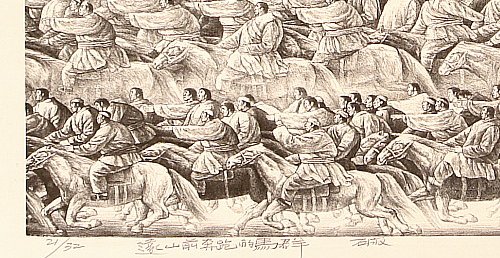
1430 - Intaglio Printing - etching onto metal (zinc/copper) plates
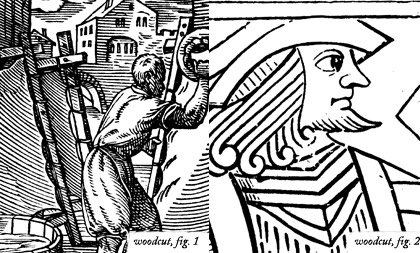
1439 - The Gutenberg Press was invented - Reign of woodcut illustrations
16th - 17th Century - extended use of the Etching and engraving techniques.

1796 - Lithography
In the lithographic process, ink is applied to a grease-treated image on the flat printing surface; non image (blank) areas, which hold moisture, repel the lithographic ink. This inked surface is then printed—either directly on paper, by means of a special press.

1837 - Chromolithography
This is process of printing color pictures from a series of stone or zinc plates by lithography.
19th century - Moved more towards wood engraving, which could more easily be incorporated into pages of text.
Book and journal publishers would employ workshops of wood-engravers to render artists’ drawings onto polished blocks of fine-grained yew or box-wood which could then be locked directly into the printing-chase with the metal type
1843 - Rotary printing press
A rotary printing press is a printing press in which the images to be printed are curved around a cylinder. Printing can be done on large number of substrates, including paper, cardboard, and plastic.
Some information to have in mind for the second half of the 19th century -
The Industrial Revolution.
The declining of the Censorship Laws in France (Daumier had to stop his political caricatures because of them).
The massive migration of artist that developed the Social Realism (known as Realism too) to England.
The influences of Pre-Rafaelite Brotherhood, Arts and Crafts Movement, Asthetic Movement , The Art Noveau, Les Nabis, the Impressionism and the Post-Impressionism.
In this period was the Golden Age of the Victorian Illustration (UK) and it began the Golden Age of the American Illustration. The American "golden age of illustration" lasted from the 1880s until shortly after World War I (although the active career of several later "golden age" illustrators went on for another few decades). As in Europe a few decades earlier, newspapers, mass market magazines, and illustrated books had become the dominant media of public consumption. Improvements in printing technology freed illustrators to experiment with color and new rendering techniques. A small group of illustrators in this time became rich and famous. The imagery they created was a portrait of American aspirations of the time.
Illustrators contributed to satirical and straight-fiction magazines, but in both cases the demand was for character-drawing that encapsulated or caricatured social types and classes.
Some well known illustrators of the 19th Century -
Honoré Daumier - Prolific French caricaturist, painter, and sculptor especially renowned for his cartoons and drawings satirizing 19th-century French politics and society.
The work of Daumier really intrigues me as the realistic yet exaggerated cartoon like style brings humor and stands out from most of the illustration at the time.

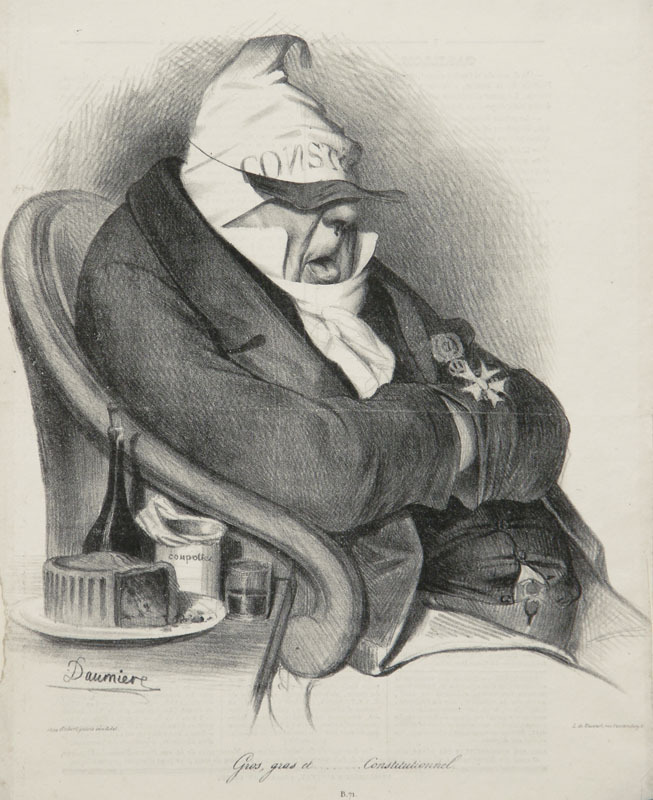


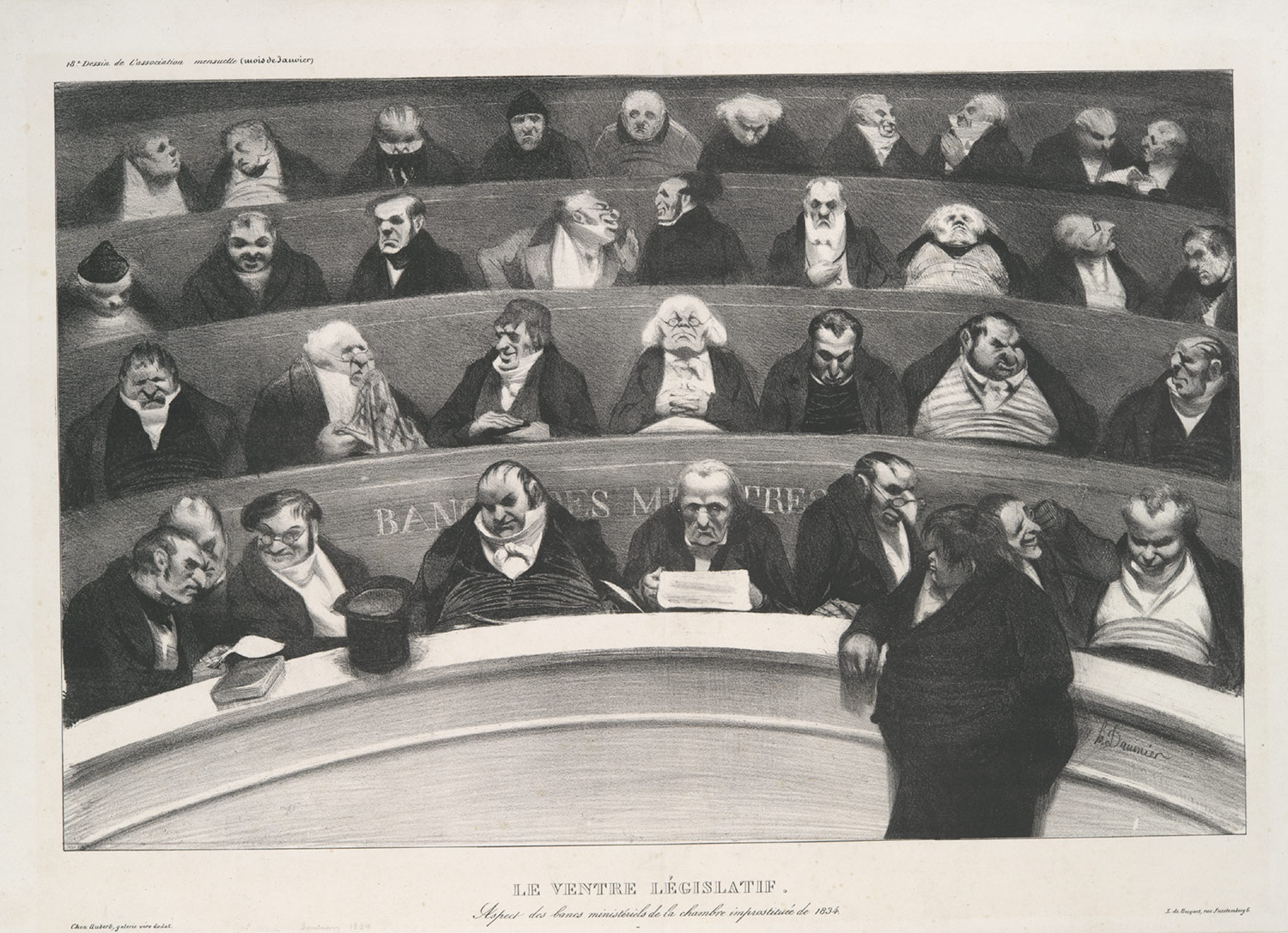
George Cruikshank - British caricaturist and book illustrator, praised as the "modern Hogarth" during his life. His book illustrations for his friend Charles Dickens, and many other authors, reached an international audience.



John Tenniel - British illustrator, graphic humourist and political cartoonist whose work was prominent during the second half of England’s 19th century. Tenniel is considered important to the study of that period’s social, literary, and art histories. Tenniel was knighted by Victoria for his artistic achievements in 1893.
Tenniel is most noted for two major accomplishments: he was the principal political cartoonist for England’s Punch magazine for over 50 years, and he was the artist who illustrated Lewis Carroll’s Alice’s Adventures in Wonderland and Through the Looking-Glass.
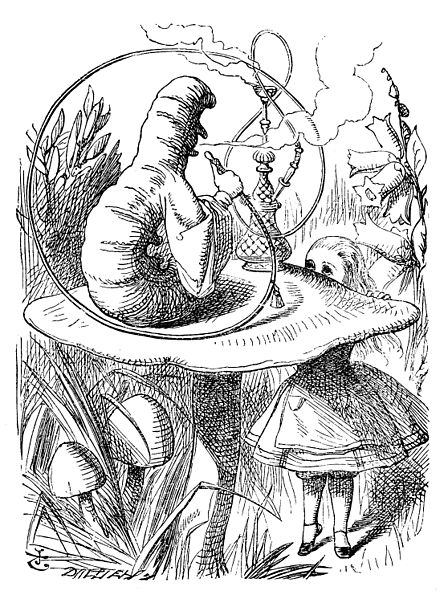

Gustave Doré - French illustrator , painter and sculptor . Doré was largely self-taught and worked as an illustrator since he was 16 years old. He contributed illustrations to approx. 90 books, including a Bible edition from 1866.
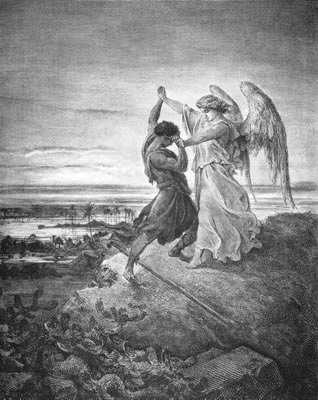
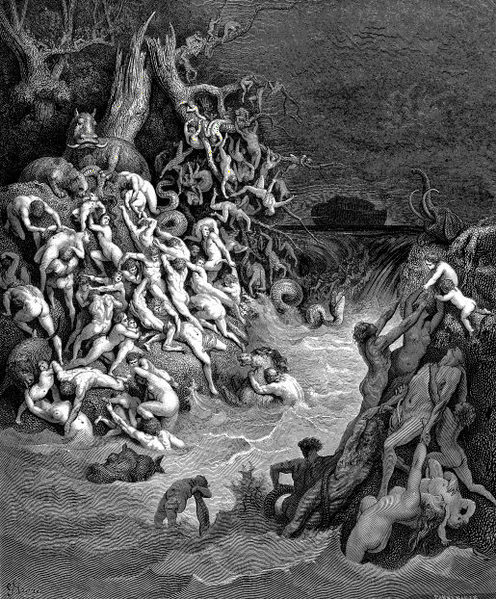
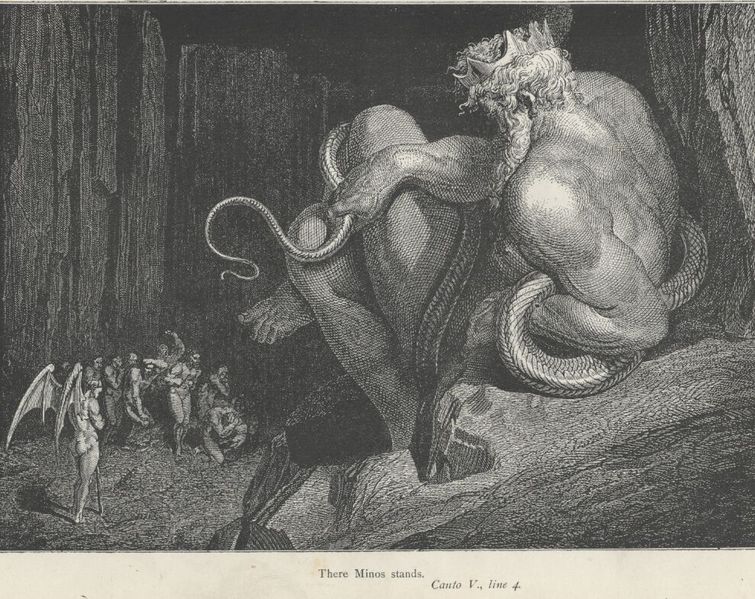
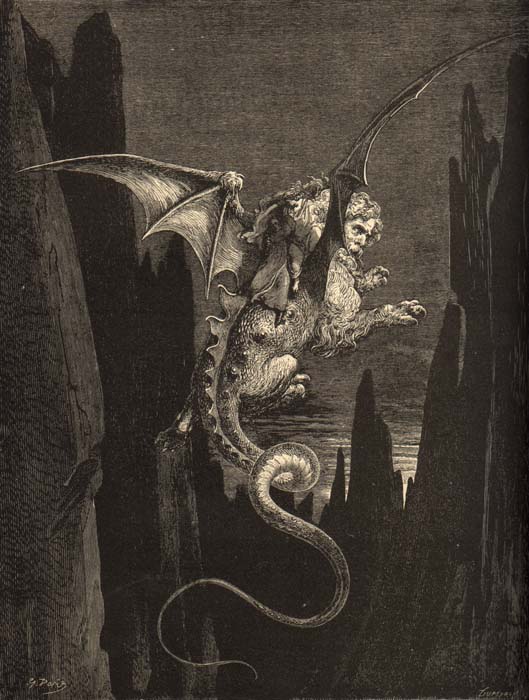
Beatrix Potter - English author, illustrator, natural scientist and conservationist best known for her imaginative children’s books featuring animals such as those in The Tale of Peter Rabbit which celebrated the British landscape and country life.

Arthur Rackham - English book illustrator


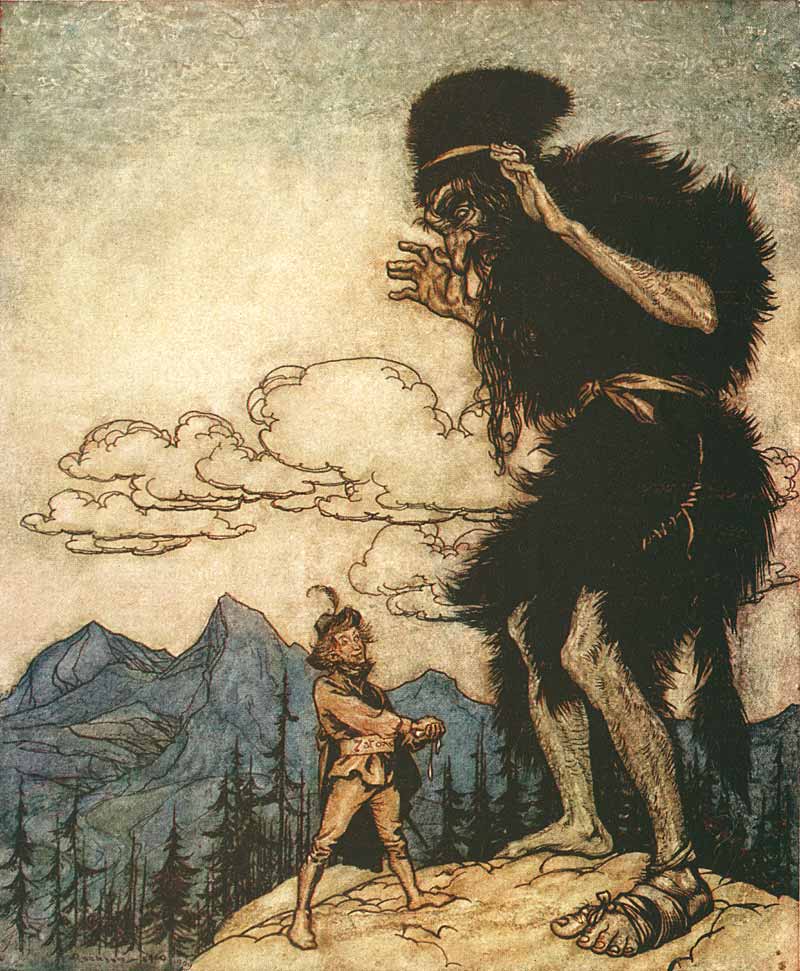
Aubrey Vincent Beardsley - English illustrator and author. His drawings in black ink, influenced by the style of Japanese woodcuts, emphasized the grotesque, the decadent, and the erotic. He was a leading figure in the Aesthetic movement which also included Oscar Wilde and James A. McNeill Whistler.


Punch Magazine - (or the London Charivari) was a British weekly magazine of humour and satire established in 1841 by Henry Mayhew and engraver Ebenezer Landells. Historically, it was most influential in the 1840s and 50s, when it helped to coin the term "cartoon" in its modern sense as a humorous illustration. It became a British institution, but after the 1940s, when its circulation peaked, it went into a long decline, finally closing in 1992. It was revived in 1996, but closed again in 2002.
http://punch.photoshelter.com/
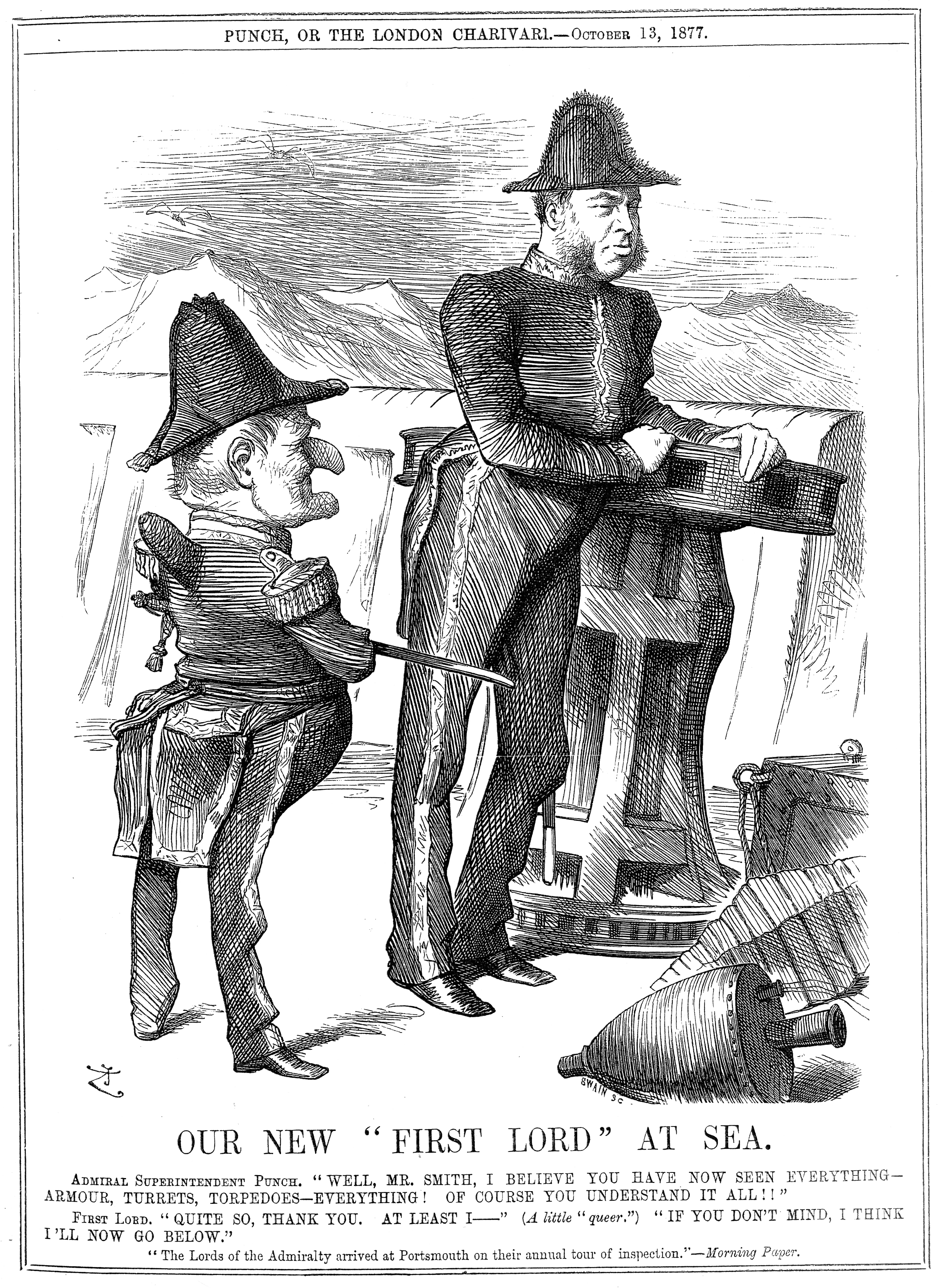
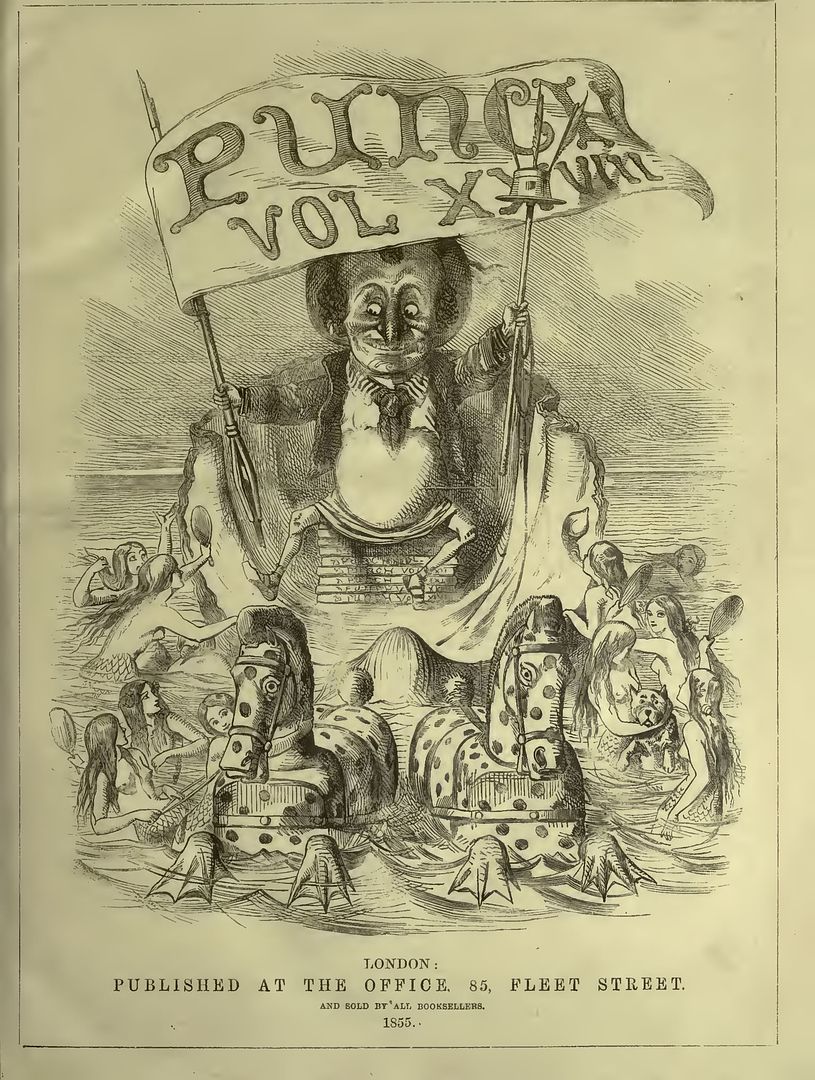


20th Century
Early 20th Century -
In England, books were very expensive. the target market of the books was the adults, However there was a huge market for the books for children with wealthy parents. England was the center for the Book production.
America was the center for Magazines production
The rising of the poster as a medium for the Advertising
Invention of screen printing
Influence of the First World War
1930s - The Great Depression
Illustration within Design and Advertising
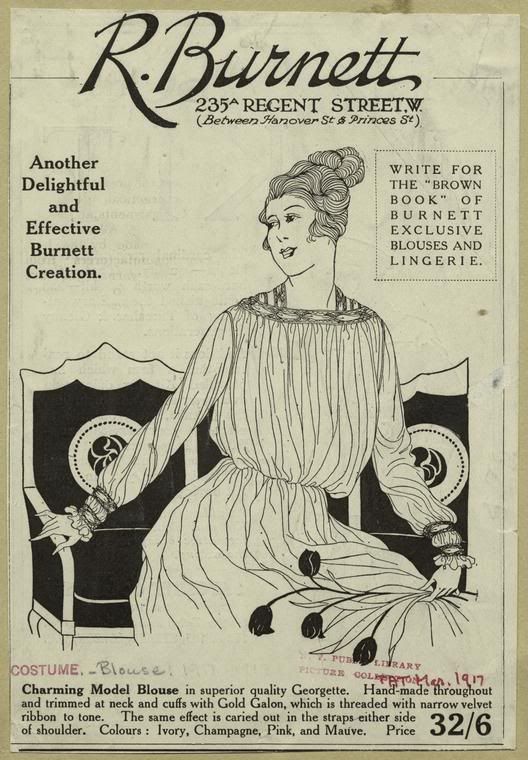
.jpg)
.jpg)
"The profession of illustration developed in tandem with the profession of advertising and the two have been intertwined and somewhat dependent on each other since their beginnings. Before the popularity and feasibility of photographic reproduction advertising depended on illustration as the means of producing visual images to compliment the message of advertisements. The invention and success of the computer has not replaced traditional illustrators but has given them a new set of tools to create and develop varying visual styles of illustration. Advertising agencies often contract out to a variety of freelance illustrators for their project-specific needs as illustrators often have a unique aesthetic that may or may not lend itself to the message of the client.
Many illustrators have found a home somewhere in-between the fields of design and illustration and work on a range of projects ranging from poster illustrations to company logos. Hybrid illustrators and designers are able to offer their clients a wider range of services so that the client does not have to budget for the cost of two different studios or individuals. The graying lines between the two fields have created a wider field as the design profession has become increasingly saturated with clients and professionals."
Illustrators of the early 20th Century
Howard Pyle - American illustrator and author, primarily of books for young people. Sometimes called the Father of American Illustration, he wrote and illustrated dozens of books, largely fairy tales, fables and other stories.

Jean de Brunhoff - French writer and illustrator known for creating the Babar books, the first of which appeared in 1931



Howard Chandler Christy - American artist and illustrator famous for the "Christy Girl"



James Montgomery Flagg - American artist and illustrator. He worked in media ranging from fine art painting to cartooning, but is best remembered for his political posters


E. H. Shepard - English artist and book illustrator. He was known especially for his human-like animals in illustrations for The Wind in the Willows by Kenneth Grahame and Winnie-the-Pooh by A. A. Milne.
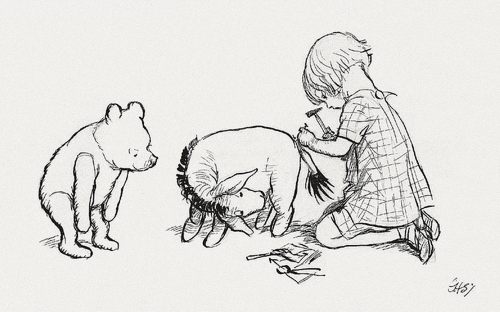

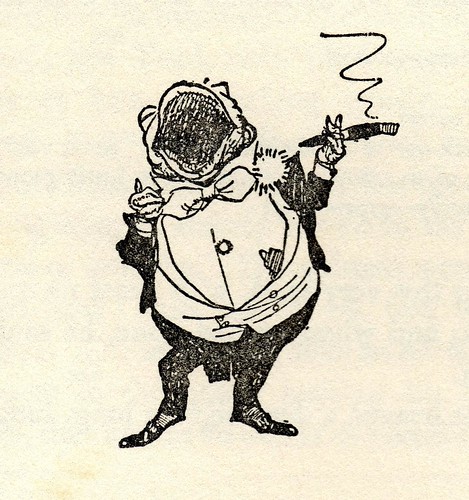
Late 20th Century
The Second World War
1949 - First Photocopier
1969 - First Laser Printer
America - image of the Housewife and the images of lifestyles according to the American Dream
TV
Dr Seuss - (Theodor Seuss Geisel) American writer, poet, and cartoonist most widely known for children's picture books written and illustrated as Dr. Seuss. Geisel published 46 children's books, often characterized by imaginative characters, rhyme, and frequent use of anapestic meter. His most celebrated books include the bestselling Green Eggs and Ham, The Cat in the Hat, The Lorax, One Fish Two Fish Red Fish Blue Fish, Horton Hatches the Egg, Horton Hears a Who!, and How the Grinch Stole Christmas!.




Victor Moscoso - Spanish artist best known for producing psychedelic rock posters/advertisements and underground comix in San Francisco during the 1960s and 1970s.


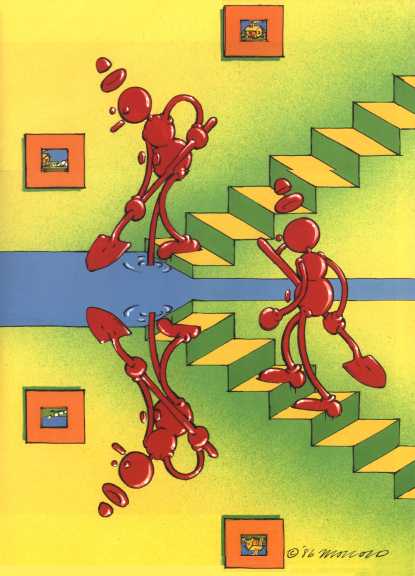

Robert Crumb - American cartoonist and musician. His work displays a nostalgia for American folk culture of the late 19th and early 20th centuries, and sharp satire of contemporary American culture. His work has attracted controversy, especially for his depiction of women and racial minorities.

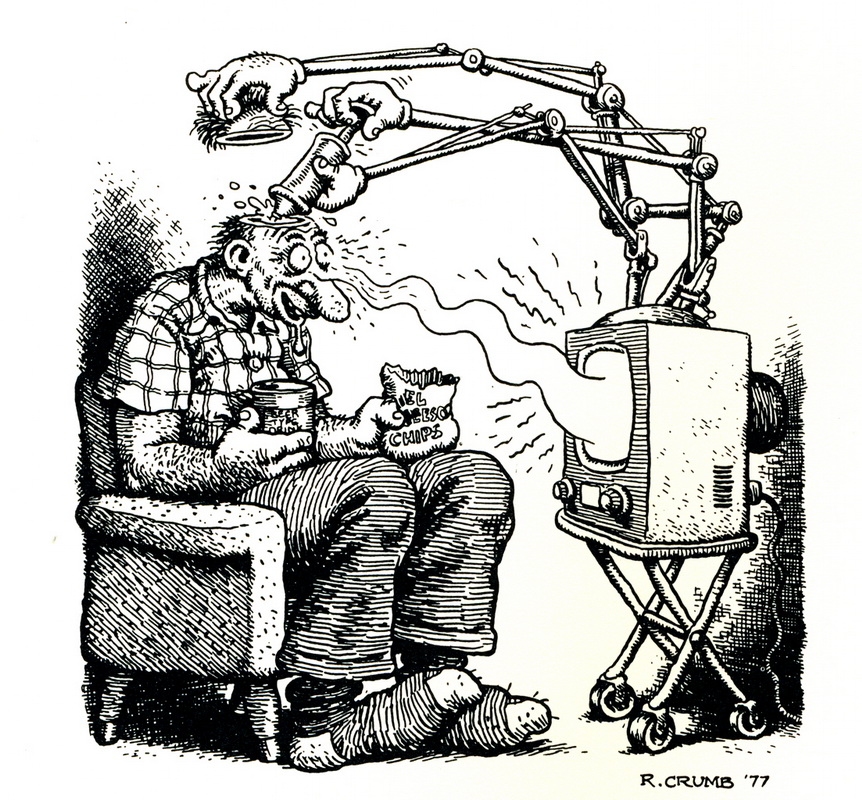




Underground Comix
Underground comix are small press or self-published comic books which are often socially relevant or satirical in nature. They differ from mainstream comics in depicting content forbidden to mainstream publications by the Comics Code Authority, including explicit drug use, sexuality and violence. They were most popular in the United States between 1968 and 1975, and in the United Kingdom between 1973 and 1974.
Robert Crumb, Gilbert Shelton, and numerous other cartoonists created underground titles that were popular with the hippie counterculture scene. Punk had its own comic artists like Gary Panter. Long after their heyday underground comix gained prominence with films and television shows influenced by the movement and with mainstream comic books, but their legacy is most obvious with alternative comics.


End of 20th Century
Punk style
Science-Fiction
Psychedelic
Growing market - magazines, advertising, film, books
Gerald Scarfe - English cartoonist and illustrator. He has worked as editorial cartoonist for The Sunday Times and illustrator for The New Yorker. Well known for his work for Pink Floyd.



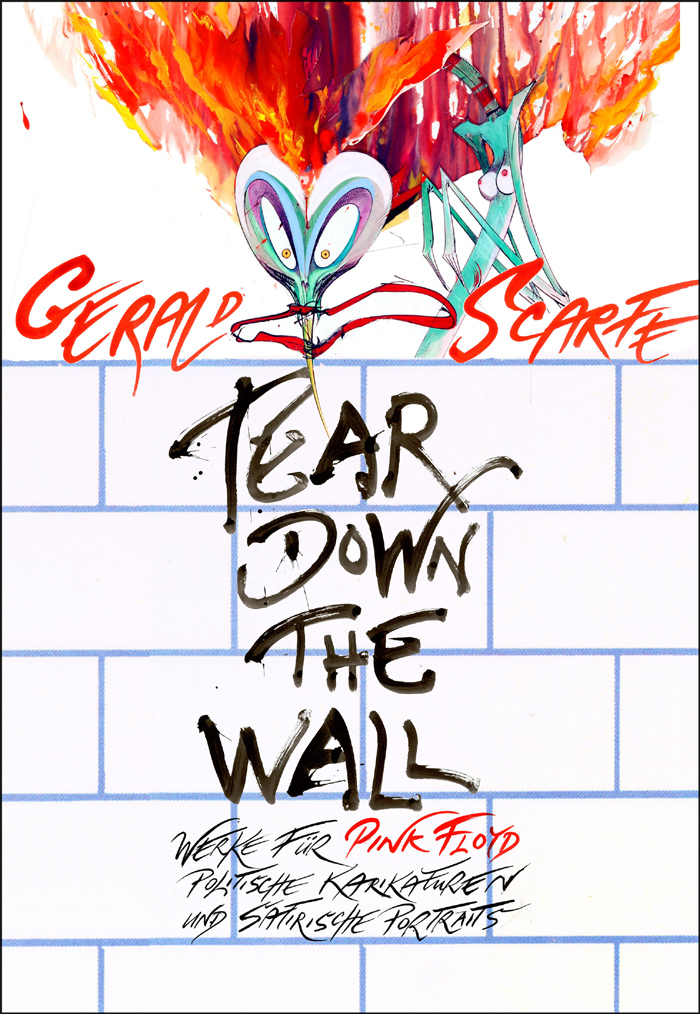

Maurice Sendak - American illustrator and writer of children's books. He became widely known for his book Where the Wild Things Are, first published in 1963.

Quentin Blake - English cartoonist, illustrator and children's writer. He may be known best for illustrating books written by Roald Dahl.


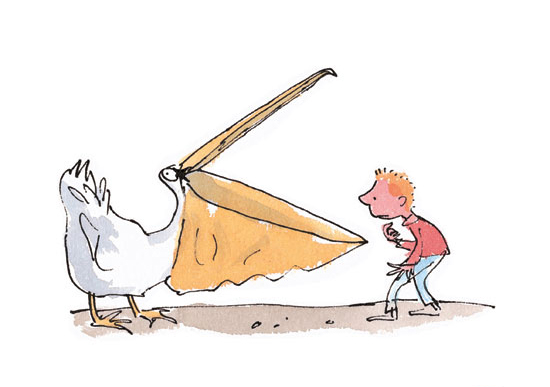

Illustration and Art
"Today, there is a growing interest in collecting and admiring original artwork that was used as illustrations in books, magazines, posters, blogs, etc. Various museum exhibitions, magazines and art galleries have devoted space to the illustrators of the In the visual art world, illustrators have sometimes been considered less important in comparison with fine artists and graphic designers, the term "illustrative" sometimes being used as a negative critique. But, possibly in part due to the growth of video game and graphic novel industries, as well as a recent swing in value towards illustration in magazines and other publications over photography, illustration is becoming a valued, popular, and profitable art form that can acquire a wider market than the other two, such as in Korea, Japan, Hong Kong, and the United States. Original illustration art from the best-known magazine illustrators is known to bring prices into the hundreds of thousands of US Dollars at auction."
It is clear illustration has evolved and developed massively since it was first used. Nowadays, the term illustration is very vast and covers a wide range of areas - it doesn't even need a purpose anymore - just to simply make the world a more interesting place. There are thousands of illustrators, all with different styles and techniques of working and all working for different purposes. I think the word 'illustra'tio', the Latin word for enlighten, where the term illustration comes from, really sums this practice up - it delves into the persons mind and gives you their interpretation of how they think and how they see the world, and delves into their imagination.
Some illustrators/cartoonists who inspire me
Sauerkids - Sauerkids is Mark Moget and Taco Sipma, an artist duo based in Rotterdam, the Netherlands. Besides their current day jobs as graphic designers, they started the label Sauerkids on the side as an outlet for their non-client based work. Their character based art has been shown in several international art exhibitions and projects.
They've been accused of "being on medication" but in the end their work is probably better described as a combination of innocent childhood imagery and the mental confusion of everyday life.


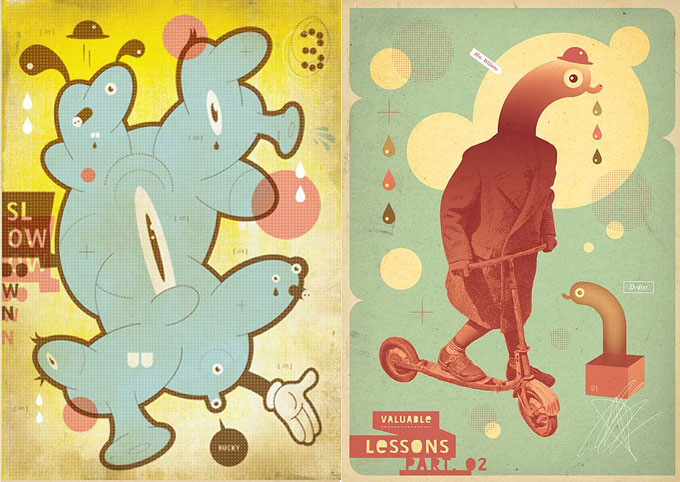

Mr Penfold




The Yok - Yok started his droopy eyed drawings in a salty sea shack down under in a town called Perth. He developed a passion for loopy moustaches, seaworthy beards and potato headed gargoyles. Loving the basic idea of Gargoyles- being placed on buildings to ward off evil, he adapted this thought and reinterpreted them in his own wobbly style.


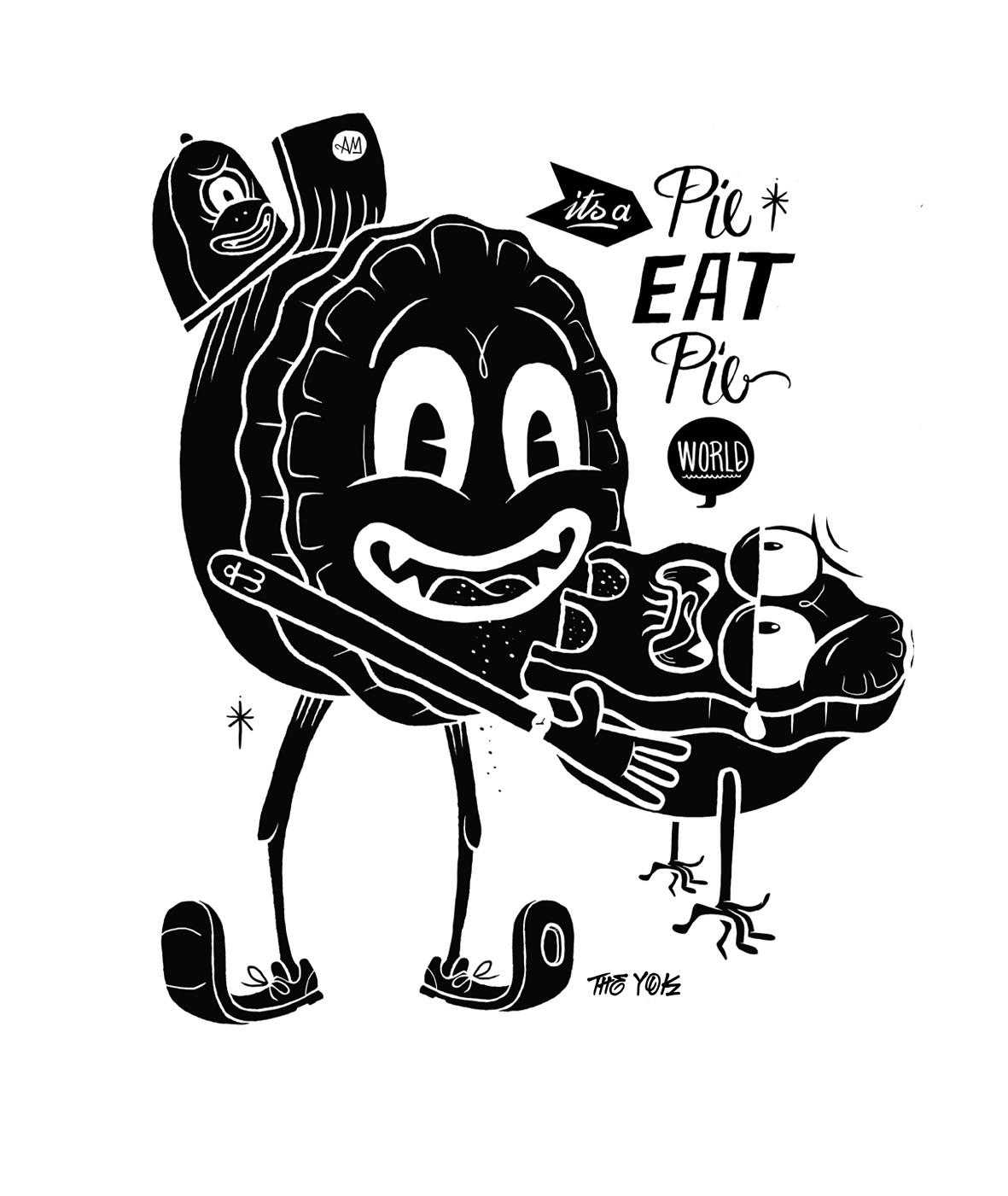
HRVB - or like his friend alfonso call him "Herr", is a freelance illustrator and graffiti-lovin-artist. He lives and works in his hometown Berlin/Germany.




McBess - French illustrator living in London. His style is a mix of influences such as Fleischer Studios' old cartoons he actualizes by using contemporary shapes, symbols, and types. Mcbess's drawings often present himself at the center of a surrealist world filled with food and musical references, such as amps, guitars and records.




Christi Du Toit


John Antoski -



Alberto Cerriteno -
Alberto Cerriteño is a Mexican illustrator & designer who has lived in America; Portland for nearly four years now. Strongly inspired by urban vinyl toys, alternative cartoons, and the pop surrealism movement, Alberto Cerriteño has developed his own very personal technique and style, having always present a delicate hints of traditional Mexican artistic influences in his management of rich textures and decorative patterns. These contrast strikingly with the blending of desaturated colors and ink, sometimes featuring a vintage coffee finish. Alberto Cerriteño illustrations have been recognized by progressive art institutions such as Juxtapoz, Create, Drawn!, The Little Chimp Society, Computer Arts, Communication Arts and IDN among others.


No comments:
Post a Comment